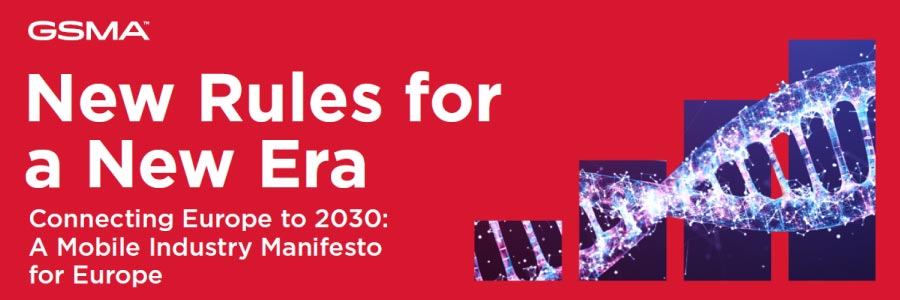Europe’s Path to 5G: Addressing Challenges and Embracing Innovation

Europe finds itself at a pivotal moment, facing increased global competition, rising trade barriers, and a race for technological supremacy. In the midst of these challenges, the mobile industry emerges as a crucial player in advancing the European Union’s (EU) digital agenda.
As the GSMA has highlighted, in its recent manifesto titled “New Rules for a New Era”, the sector is strengthening Europe’s position in the global technology race by building and delivering pan-European digital networks and future services. Next generation 5G makes it possible to make the most of technologies such as the cloud, edge computing or even artificial intelligence, which are essential for the digital transformation of European businesses, governments and society as a whole.
Industry is therefore urging European policymakers to adopt a new digital infrastructure framework that encourages investment, innovation and a harmonised digital market. These recommendations include the need for a more investment-friendly spectrum policy, closing the remaining regulatory gaps between different digital service providers and updating historical rules to reflect today’s reality.
With this document, the GSMA has drawn attention to the systemic challenges hampering the growth and competitiveness of Europe’s telecoms sector. Regulatory hurdles and barriers to investment have long plagued the sector, hindering its ability to thrive in an increasingly digital world.

Better, faster, stronger
The telecom landscape in Europe is characterised by a patchwork of regulations and standards, resulting in disjointed networks and inconsistent user experiences. To overcome this obstacle, the GSMA is advocating the implementation of policies that promote collaboration and interoperability across borders, enabling seamless connectivity and service delivery.
In this regard, another key issue covered in this manifesto is the need to address the remaining regulatory gaps for different digital service providers. Traditional regulatory frameworks often fail to keep pace with rapid technological developments, leading to regulatory asymmetries and market distortions. The solution proposed is a more holistic approach to regulation that promotes a level playing field for all players in the digital ecosystem.
Furthermore, “New Rules for a New Era”, underscores the importance of updating historically based rules to reflect current realities. The digital landscape has undergone profound transformation in recent years, driven by advancements in cloud computing, artificial intelligence, and the Internet of Things. To remain relevant in this fast-changing environment, policymakers must adapt regulatory frameworks to accommodate emerging technologies and business models.
In conclusion, Europe stands at a critical juncture in its journey towards universal 5G coverage. While the vision is ambitious, achieving it will require concerted efforts to overcome systemic challenges and embrace innovation. By heeding the recommendations outlined in the manifesto, EU policymakers can lay the foundation for a thriving digital economy and position Europe as a global leader in the 5G era.

Larysa Bernal
EMEA MNO Sales director
Professional with extensive experience in the telecommunications industry, having held senior positions with companies such as Siemens AG and Teltronic. She holds a degree in German Philology from the Taras Shevchenko National University of Kyiv and a business management qualification from EFA El Salto (Zaragoza).